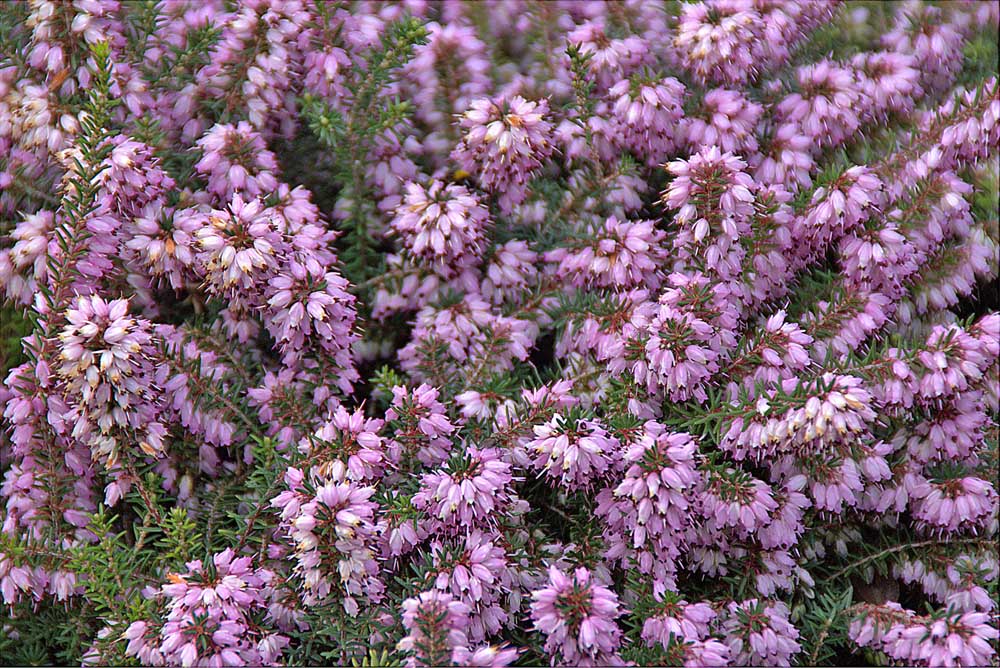Plant winter-flowering shrubs for a dash of color
Published 9:32 am Thursday, September 22, 2022

- Heath is a good shrub for winter color in our maritime climate.
Winter-flowering shrubs should be used far more often in western Washington.
Trending
Our gray, overcast winter weather can be brightened with a spot of color strategically placed in the garden. In addition, some of the most pleasantly scented plants bloom during this season, giving an added dimension to the winter garden. Such plants are particularly effective when used in garden areas that are close to walkways and entryways to the house.
Winter flowering shrub varieties
Check regional nurseries for some of the following shrubs. The best time to shop for them is during the winter when they are in flower.
• Viburnum x bodnantense is a medium to large deciduous shrub. After it drops its leaves in fall, it produces clusters of small, pink, fragrant flowers, often throughout the entire winter. The branches are excellent for cutting and forcing in the house.
• Mahonia x media ‘Charity’ is an exotic-looking relative of our native Oregon grape that can get 10 feet or more in height. Sprays of yellow flowers appear in late autumn and last into winter and will be visited by overwintering hummingbirds. Waxy black berries appear in summer and are favored by robins and other birds.
• Hamamelis mollis and H. x intermedia are the witch hazels. They are vase-shaped deciduous shrubs that can easily become a small tree. They produce an abundance of rich golden- or red-toned flowers in January and February. H. mollis is the most fragrant of the genus, with a rich, spicy fragrance.
• Corylopsis pauciflora is known as the buttercup winter hazel. In February, bare branches are adorned with clusters of pale yellow flowers. Its naturally graceful growth pattern requires little or no pruning.
• Sarcococca confusa and S. ruscifolia are attractive, glossy-foliaged evergreen shrubs that thrive in shade. Both produce small white vanilla-scented flowers. Plant near a doorway, preferably on the north or east side of the house. The fragrance of the winter flowers can be strong, and one branch cut for indoor use will easily fill a room with its scent.
• Daphne odora is a low-growing evergreen looking somewhat like a rhododendron. However, its small, rosypurple flowers produced in February and March tell you it’s a daphne. This is the so-called winter daphne, and it’s reputed to have the most fragrant flower in the genus.
• Ribes sanguineum is our native flowering current. Late winter and early spring flowers of this deciduous shrub have a spicy fragrance and attract overwintering hummingbirds.
• Stachyurus praecox is a large deciduous shrub with graceful arching stems. In late winter, pendulous, yellow flowers are lightly scented and provide early foraging for bees.
• The Ericas, or heaths, are generally low-growing shrubs with narrow, needle-like leaves. They produce white, rose, red, or purple bell-shaped flowers. Many varieties of Erica carnea bloom throughout the winter. They do best in full sun.
• Other woody plants that flower during the winter include Camillia sasanqua, Garrya elliptica (coast silk tassel), Chaenomeles speciosa (flowering quince), Cornus mas (cornelian cherry) and a few rhododendrons. Don’t forget other plants that flower during winter, including perennials. Bergenia, Helleborus, Epimedium, some cyclamens, winter aconite, and primulas will all perform well in winter gardens in our area.









